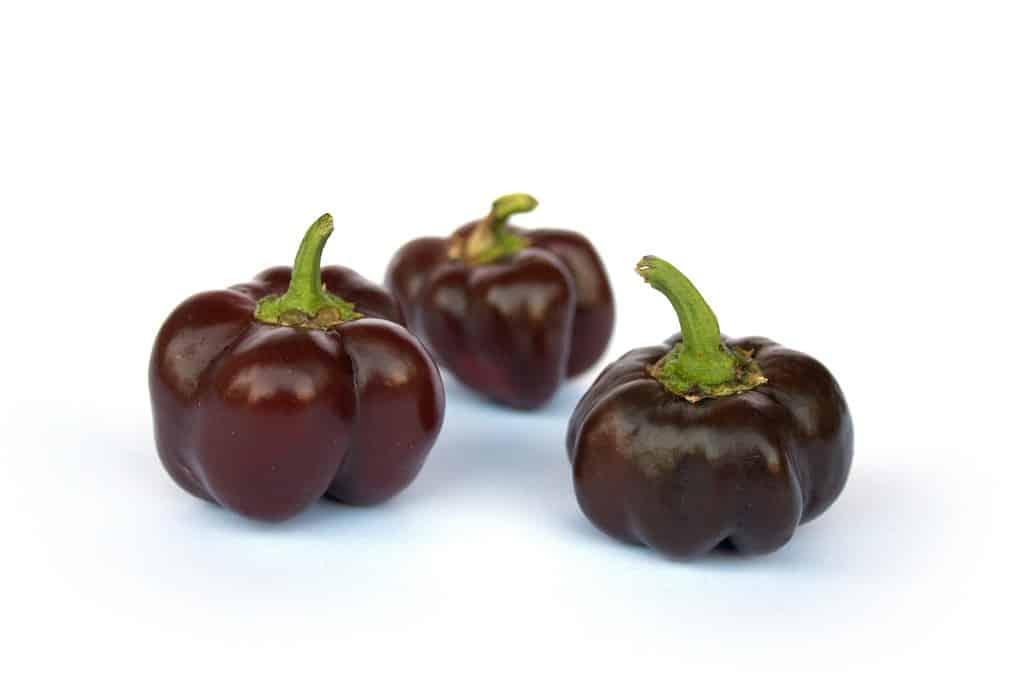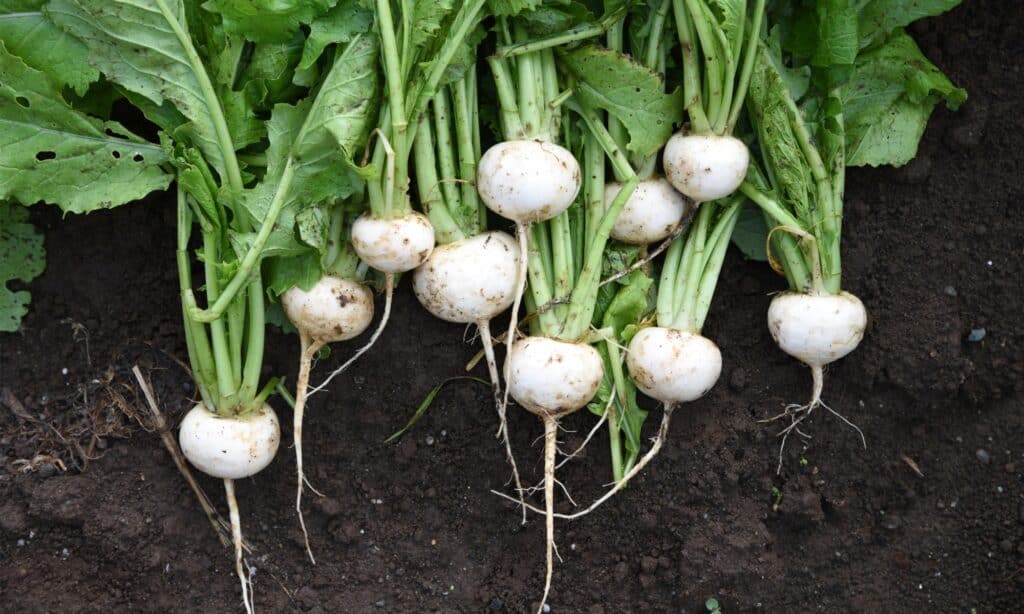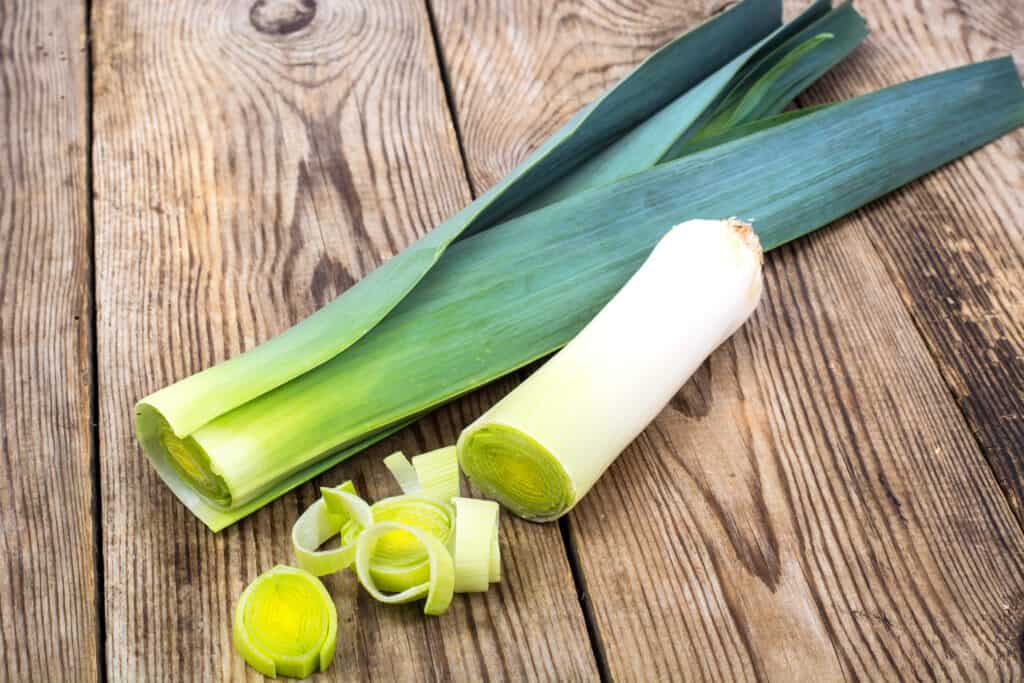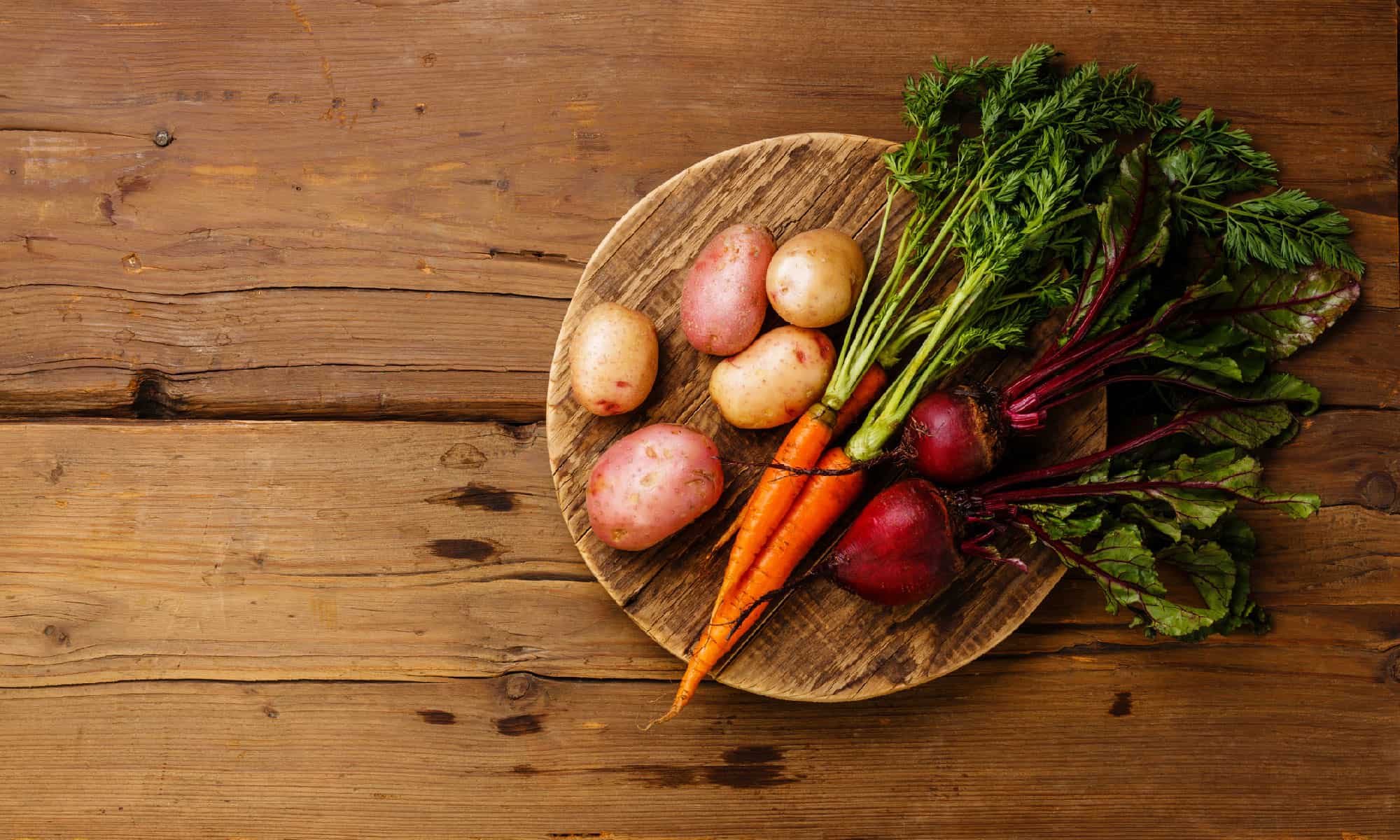Fresh, seasonal vegetables have the optimum flavor and nutritional value. But it also often has the added bonus of supporting local farmers. Each season brings a unique bounty of vegetables that provide a range of flavors, textures, and health benefits. So, we wanted to help you find the veggies you like, at their best. Let’s dive into the world of seasonal vegetables and look at peak freshness by season.
Spring Vegetables
Asparagus
Asparagus (Asparagus officinalis) is a perennial vegetable that thrives in the spring. The edible, delicate spears pack a nutritional punch. They have vitamins A, C, E, and K, as well as folate and fiber. Enjoy asparagus steamed, pan-fried, roasted, grilled, or added to salads and stir-fries. Wrap with prosciutto for a decadent treat.
Artichoke
Artichokes (Cynara cardunculus) are a prized vegetable many people have not experienced yet. But their tender hearts and nutty flavor are worth the effort. They are a good source of dietary fiber, vitamin C, folate, magnesium, and potassium. Steam or boil artichokes until tender. Then serve them with a dipping sauce. They taste fantastic grilled, roasted, or pickled.

Artichokes are a fun finger food at their peak freshness in the spring.
©javarman/Shutterstock.com
Peas
Sweet and vibrant, peas (Pisum sativum) are a delightful spring vegetable. They are rich in antioxidants, vitamins C and E, and zinc. While frozen and canned peas are commonplace, that is not the only way to enjoy them. Eat peas straight out of the pod (or in it), add to salads, or cook in stir-fries and soups for fantastic and fresh flavor.
Radishes
Radishes (Raphanus sativus) come in many colors and shapes. But grocery stores typically carry red radishes through most of the year. They add a crisp and peppery bite to dishes. They are low in calories and high in vitamins A, K, E, and C, potassium, calcium, and fiber. Enjoy radishes raw in salads, pickled, on tacos, or sliced into sandwiches.
Spinach
Spinach (Spinacia oleracea) is a leafy green vegetable that thrives in cooler temperatures. The dark green leaves have vitamins A, C, and K, magnesium, iron, calcium, and antioxidants. This vegetable can also help with hydration since it is made primarily of water. Add spinach to salads, sautés, smoothies, and pasta dishes.
Green Onions
Scallions, spring onions, or green onions (Allium fistulosum) are young, tender green shoots. Typically, they get harvested before the bulbs get too large. They have a mild flavor and play a prominent role in Asian cuisine. Include this tasty vegetable raw in salads, use it as a garnish, or cook it into stir-fries, soups, and omelets.
Carrots
This crunchy root vegetable is a star year-round. But carrots (Daucus carota) are particularly sweet and tender during the spring. They are an excellent source of vitamin K, beta carotene, potassium, and fiber. Enjoy raw carrots as a snack, grate them into salads, roast them, or put them in soups and stews.
Summer Vegetables
Tomatoes
Tomatoes (Solanum lycopersicum) are the quintessential summer vegetable. They are tasty and juicy. This taste delight is an excellent source of vitamins C, potassium, and antioxidants like lycopene. Enjoy them fresh in salads, sandwiches, and salsas or cooked in sauces, soups, and grilled dishes.
Beets
One truly vibrant root vegetable is beets are vibrant roo(Beta vulgaris). They come in various colors, including red, golden, and striped varieties. Beets are a good source of folate, potassium, fiber, Vitamin C, and magnesium. Roast or boil them, grate into salads, or even juice them for a nutritious and colorful beverage.
Zucchini
This versatile summer squash has a mild flavor and tender texture. Zucchini (Cucurbita pepo) is low in calories and a good source of vitamins A and B6, folate, and potassium. Slice zucchini into salads, spiralize into “zoodles,” grill, roast, or sauté it or add to baked goods like zucchini bread.
Cucumbers
Cucumbers (Cucumis sativus) are cooling and refreshing vegetables that are highly hydrating. They are perfect for hot summer days. Cucumbers have few calories, vitamins A and K, and are packed with water content. Enjoy them sliced into salads, made into pickles, or used as a base for refreshing summer drinks like cucumber-infused water or cocktails.
Bell Peppers
Bell peppers (Capsicum annuum) come in multiple colors, including red, yellow, orange, and green. They add a vibrant crunch and sweetness to summer dishes. Bell peppers have carotenoids, vitamin C, and antioxidants. Put them raw into salads, stuff, grill, roast, or roast them. They also make excellent additions to stir-fries, fajitas, and kebabs.

Bell peppers come in a large variety of colors, though most grocery stores typically only carry red, orange, yellow, and green.
©Small Dreamfactory/Shutterstock.com
Green Beans
Green beans (Phaseolus vulgaris), also called snap beans or string beans, are tender and flavorful during summer. Feel free to buy them by the handfuls (or grow some for your own). They are a good source of protein, potassium, fiber, and folate. Eat them steamed, sautéed, stir-fried, or added to salads, soups, and in casseroles.
Corn
Another quintessential summer vegetable is corn (Zea mays). Many people love corn due to its sweet and juicy kernels. Corn is rich in fiber, carotenoids, vitamins, and minerals. Fresh corn is delicious straight off the cob, grilled, boiled, or used in salads, salsas, soups, and side dishes.
Eggplant
Eggplants (Solanum melongena) are gorgeous vegetables widely available in the summer. They have a creamy texture and a mild, slightly bitter taste. Eggplants are a good source of fiber, thiamine, manganese, copper, and Vitamin B6. They can get grilled, roasted, or sautéed. Alternatively, use them in dishes like eggplant Parmesan, moussaka, or baba ganoush.
Okra
If you haven’t tried okra (Abelmoschus esculentus) yet, consider adding it to a meal this summer. This unique vegetable thrives in warm climates and is popular in Southern cuisine. It has a distinctive texture and a mild, slightly sweet flavor. Okra is low in calories and a good source of fiber, vitamins A and C, and antioxidants. Fry, sauté, roast, or add to soups, stews, and gumbo for a taste delight.
Fall Vegetables
Pumpkins
Bright orange pumpkins (Cucurbita pepo) are synonymous with fall. And it is no wonder. They offer a wealth of culinary possibilities beyond carving jack-o’-lanterns. They are rich in vitamins A, E, and C, dietary fiber, folate, and antioxidants. Pumpkins can get roasted, pureed, and used in soups and stews. They are also tasty baked into pies and other sweet treats.
Rutabaga
A slightly unique root vegetable is the rutabaga (Brassica napobrassica). They have a sweet and nutty flavor. Rutabagas are a good source of fiber, vitamins C and E, calcium, magnesium, and antioxidants. Rutabagas can get roasted, mashed, added to stews, or used in soups and casseroles.
Sweet Potatoes
Sweet potatoes (Ipomoea batatas) are versatile with a naturally sweet taste. They are an excellent source of beta-carotene, fiber, and antioxidants. Baking, roasting, or mashing sweet potatoes brings out their natural sweetness and enhances their vibrant orange color.
Brussels Sprouts
We know. Not everyone is a fan of Brussels sprouts (Brassica oleracea). The small, cabbage-like vegetables develop a mild, slightly bitter taste after getting cooked. They are rich in vitamins C and K, fiber, and antioxidants. Roasting, sautéing, or adding them to stir-fries brings out their natural flavors. Consider cooking them in bacon fat or adding bacon to the finished dish for an extra flavor punch.
Cauliflower
You can find cauliflower (Brassica oleracea var. botrytis) in white, purple, and orange varieties. It has a mild, slightly nutty flavor and firm texture. Cauliflower is rich in vitamins C and K, fiber, and antioxidants. Roast, steam, or mash cauliflower for a tasty dish. It can also get used in grain-free pizza crusts or riced as a low-carb alternative.
Broccoli
While most kids aren’t thrilled with broccoli (Brassica oleracea), it is a flavorful and nutritious vegetable. It is high in vitamins C and K, fiber, iron, potassium, and more. Broccoli can get steamed, sautéed, roasted, or used in stir-fries, salads, and soups.
Radicchio
If you are not familiar with radicchio (Cichorium intybus), it is a brightly colored, bitter-leafy vegetable. It is rich in copper, zinc, vitamins K and C, fiber, iron, and antioxidants. Enjoy radicchio raw in salads, grilled, roasted, or used in risotto and pasta dishes.
Turnips
There are many varieties of spicy turnips (Brassica rapa subsp. rapa). These root vegetables come in various colors and have a slightly spicy flavor. They are a good source of vitamins C and K and folate. Roast them, mash them, or add them to stews, soups, and salads.

Fall is the peak season for delicious turnips. Most grocery stores will carry at least one variety.
©iStock.com/undefined undefined
Winter Vegetables
Cabbage
Another versatile cruciferous vegetable is cabbage (Brassica oleracea var. capitata). It thrives during the winter months. There are many cabbage varieties, including green, red, and Savoy. And each has its own texture and flavor. Cabbage is low in calories and a good source of vitamins C and K and fiber. Use it in salads, coleslaw, soups, stir-fries, or ferment for sauerkraut.
Kale
Kale (Brassica oleracea var. acephala) is a popular leafy green vegetable that is highly nutritious and considered a superfood. It thrives in colder weather and has a slightly bitter taste. Kale has vitamins A, C, and K, beta-carotene, iron, calcium, folate, manganese, and more. Some popular ways to enjoy it include added in salads, sautés, soups, smoothies, or even baked into crispy kale chips.
Parsnips
Parsnips (Pastinaca sativa) look like carrots. They are white and have a sweet, earthy flavor. Parsnips are a good loaded with micronutrients, fiber, folate, and vitamins C and K. Enjoy parsnips roasted, mashed, added to soups and stews, or used in gratins and casseroles.
Winter Squash
Winter squash (Cucurbita spp.), such as acorn, butternut, and spaghetti squash, are hearty vegetables in season during the fall and winter months. Each one packs a slightly different nutritional punch. They also store extremely well, so you can keep some handy for a cold winter day. Winter squash can get roasted, used in soups, sauces, and casseroles, or stuffed and baked.
Leeks
Leeks (Allium ampeloprasum) belong to the onion family. But they have a milder and sweeter flavor than traditional onions. Leeks are high in dietary fiber, low in calories, and have vitamin K and antioxidants. Leeks are fantastic sautéed or can get used in soups and stews.

Use the white part of leeks in any dish that requires a minor onion flavor.
©iStock.com/ArtCookStudio
Thank you for reading! Have some feedback for us? Contact the AZ Animals editorial team.








